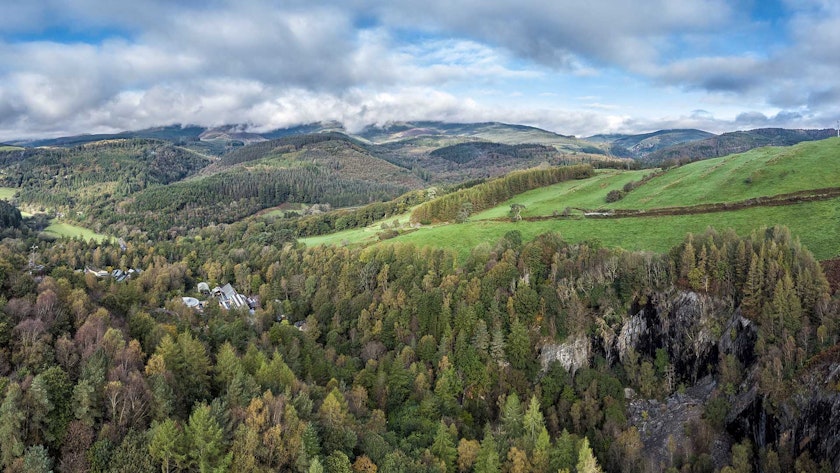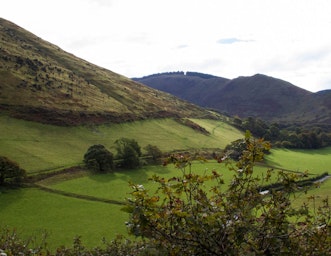
Claire Thorpe gives an overview of what we might expect from the biodiversity summit, and talks to Dr Scott Leatham about what it could mean for the climate.
– Originally published in CAT’s members’ magazine, Clean Slate, spring 2022 –
After all the buzz around COP26 in November, you could be forgiven for thinking we’re taking a trip back in time to a previous conference. But we’re referring to a future COP15 – this one focused on biodiversity. COP15 was scheduled to be held in Kunming, China, in October 2020, but just like its climate cousin, it was delayed due to the pandemic. The meeting, where countries hope to agree on a post-2020 Global Biodiversity Framework, is now expected to take place later this year.
Targets for nature protection
There are three main targets for the 196 countries attending the summit to agree on. The first is protecting 30% of the world’s land and sea by 2030. Some of the big points of disagreement will likely surround where these protected areas are located, who funds them, and how ecologically intact the areas must be (for example, how much of the original species richness does the ecosystem contain, or how fragmented and degraded is the habitat).
Secondly, there is a finance target. The UN Environment Programme (UNEP) is looking for a $200 billion increase in international funds from all sources. This would help fund conservation work and generate security for protected areas, helping ensure they can be policed. Extra funding may also come from the third big commitment – to redirect or reform financial incentives that currently enable and contribute to practices harmful to biodiversity. This includes subsidies for intensive agriculture, deforestation, and fossil fuel extraction.
There is also mention of a target for reductions in invasive non-native species, reductions in pollution from pesticides, fertilisers, and plastics, and the contribution of nature-based solutions to fighting climate change.

Historic failures
The Convention for Biological Diversity (CBD) was signed by 196 countries (not including the US, which never ratified the treaty and will not be part of the negotiations) in 1992, the first global treaty for protecting wildlife and nature. As with the climate, countries have fallen far short of their targets for 2010 and 2020, as downwards trends for most species continue at pace, with a 2019 study showing one in nine species globally at risk of extinction this century.
Most of the biggest drivers for biodiversity loss cannot be tackled at a national scale. Pollution, invasive species, and the factors that lead to habitat loss (for example, overconsumption) are global issues. Between 2010 and 2020, some countries developed strategies for meeting targets to prevent the loss of biodiversity, but they didn’t have time to act on them before the 2020 deadline. Now, 192 countries have such strategies, so they should be able to work much faster to implement them and work to their targets to protect habitats and species going forwards.
COP15 and the climate emergency – interview with Scott Leatham

Dr Scott Leatham is a political ecologist and senior lecturer and tutor at CAT’s Graduate School of the Environment. He focuses on issues of human-nature relations and how we represent and know about nature and environments in different contexts, and through themes like justice, representation and exclusion. We asked Scott what he thought about the upcoming COP15 conference and how it relates to the climate emergency.
How will this meeting link to COP26 and action on climate change?
We’re likely to see a lot more talk about nature-based solutions. This is one of those terms used so often by so many diverse actors that it’s hard to pin down any consistent definition or rulebook. It has spawned new academic debate (even its own academic journal launching late last year), with debates raging on effectiveness, governance, and justice. On paper, it may sound great: restore nature, protect it, and reap the carbon-storage (and other) benefits of afforestation, peatlands, kelp forests, and seabed restoration. We’ve covered the possible (and currently existing) pitfalls of overreliance on this in previous articles.
Despite the knowledge gaps and uncertainties, nature-based solutions were extensively covered throughout COP26, from country plinths offering little beside tree planting to headline-grabbing pledges on reforestation. China, the host of the biodiversity COP15, has already argued for increasing nature-based solutions in talks at Kunming.
Despite knowledge and governance gaps, there’s good reason to welcome the realisation that the climate and ecological emergencies are deeply interconnected. As well as the multiple, complex feedback loops and connections between climate change and nature loss, they share common causes and require similar transformations of entire systems to begin addressing the problem. The kinds of changes we have to make to the global economy, to livelihoods, to how we move around, and so on, in order to stay within 1.5°C warming by 2100 will also benefit our fight against ecological collapse.
What lessons should be learnt from COP26?
One key argument made by civil society alliances, such as the COP26 Coalition, which CAT is a part of, was that COP26 was among the least inclusive of all previous COPs. This meant that vital perspectives were missing from the official process. As we look to COP15, it’s crucial that a much more diverse range of voices are heard.
Indigenous groups and alliances – a large, globally-spread network representing roughly 80% of the world’s biodiversity as well as threatened ways of life – point to the ongoing displacement in such territories as a result of corporate and state-driven land grabs in the name of nature-based solutions. If the need for land sovereignty continues to be ignored, then big agendas for protecting 30% of the world’s land by 2030 (and even bigger, the so-called Earth 50 plan of turning half the world into a protected area) risk erasing these histories, knowledges, and people.
Without land sovereignty and rights enshrined and protected for marginalised groups, we further risk the world’s remaining biodiversity hotspots. We also risk losing local knowledges that deserve to survive in their own right, as well as for the lessons they offer about living in harmony with nature.
What alternatives are there?
The facts are stark: we have entered a sixth mass extinction – an event that humans have not experienced before. The last global framework, the Aichi targets, failed on every one of the 20 targets.
Already in 2022, we’ve had a key piece of the planetary sustainability puzzle filled in, as researchers updated the Planetary Boundaries Framework with what’s called the ‘novel entities’ boundary. The framework tracks nine planetary boundaries, any one of which – if exceeded – could lead to the Earth entering a ‘new state’. This year, novel entities (a big part of which is plastic pollution) was revealed to have joined biosphere integrity and biogeochemical boundaries as already far exceeding safe limits. We are beyond looking at these boundaries, which includes climate change, as separate issues that are manageable individually. What we’re left with, though, is cause for hope: the causes and consequences of this mass extinction are systemic – we must respond in kind.
COP15 has to move beyond the idea that we can protect nature as a separate entity – something outside of us. Calls for restoring “wilderness” as a place “out there” reject our own wildernesses. We are inseparably a part of nature and capable of living in and within it; not as a tourist destination but inextricably as a part of our lives – from our cities to our agriculture.
Often, it is not about creating something new but listening to what’s already being done. What some researchers have called ‘convivial conservation’ is a way of transcending stale arguments in conservation about protected areas and commoditising nature. It brings together research institutes from around the world, including at the University of Sheffield in the UK, with local knowledges and implementations. The shift is already happening.
As with COP26, large governance mechanisms have fallen far short in terms of biodiversity protection. But the Intergovernmental Science-Policy Platform on Biodiversity and Ecosystem Services (IPBES) has already called for the ‘transformation’ of our economic systems – we need to ensure this is not just empty words. We are decades beyond being able to simply tinker with economic systems with their built-in injustices and insatiable growth. It is long past time to imagine something better, and that is what world leaders must do at COP15.
- Climate Change
- Nature and Wildlife
- News Feed
Related Topics
Related Pages
Related news



CAT Conversations: Sandy Stevens, CAT graduate
17th April 2025
More solar energy for CAT
4th April 2025EMAIL SIGN UP
Keep up to date with all the latest activities, events and online resources by signing up to our emails and following us on social media. And if you'd like to get involved and support our work, we'd love to welcome you as a CAT member.
